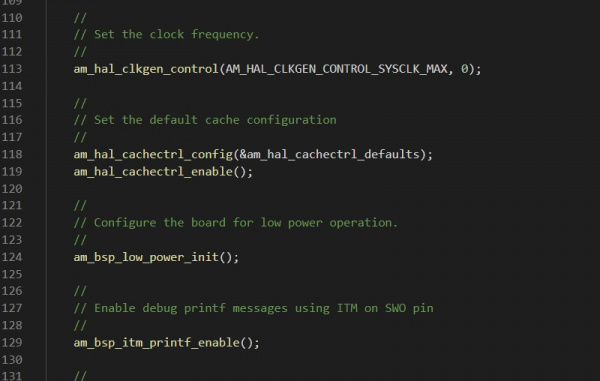Artemis Development with Arduino
Beyond Arduino
The SparkFun Apollo3 core supports all the standard Arduino functions. This means you can program digitalWrite I/O, analogRead ADC pins, Serial print to the Serial monitor, interact with hardware serial using Serial1, and even perform more complex I2C or SPI writes with the Wire and SPI libraries. The basics are there, so let's dive in to some more advanced capabilities of the Artemis!
Ambiq has created a software development kit to fully flex the Apollo3. The Ambiq SDK contains a large number of examples and demonstrates all sorts of incredible aspects of the Apollo3. Each example uses various functions that look like this:
These long-named-functions are part of what's called a HAL or hardware abstraction layer. We aren't going to go into the specifics of setting up or using the SDK right now, but just know that the the SparkFun Arduino Apollo3 core is built upon this HAL which means you can call HAL functions directly inside the Arduino environment.
language:c
// Clear the RTC alarm interrupt.
am_hal_rtc_int_clear(AM_HAL_RTC_INT_ALM);
This is a powerful tool for advanced users; you can use the built in Arduino functions such as Serial.begin(9600) and delay(100) while integrating more advanced HAL functions for controlling things like interrupts.
If you do decide to dig into the SDK, head on over to our Using SparkFun Edge Board with Ambiq Apollo3 SDK tutorial for more information!

